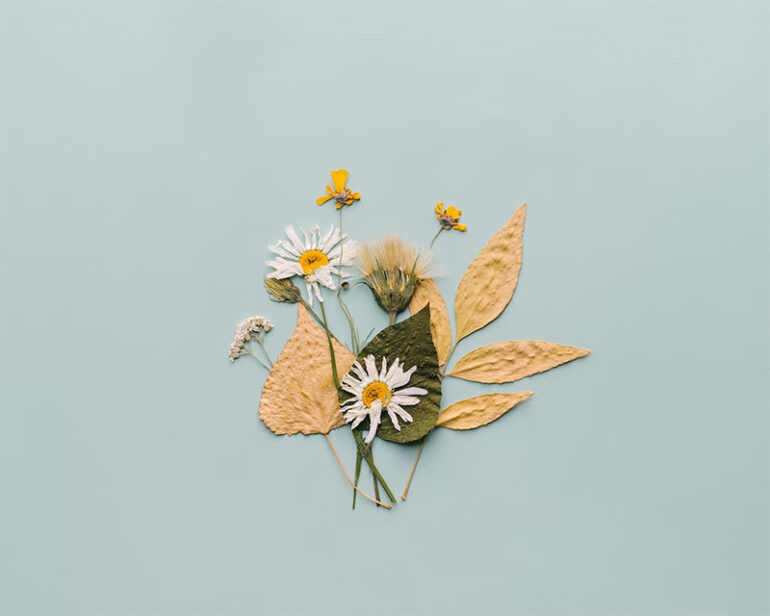Oshibana, which translates to “pressed flowers” in Japanese, is a craft that dates back to the early 16th century. This Japanese art form uses dried, pressed flowers and other plants to create images. Creating an Oshibana typically involves numerous laborious steps. The first step is choosing the right flowers, leaves, and other plant components like branches, bark, etc. These parts must be chosen at the appropriate time to preserve their colors as much as possible. The next crucial step is drying these materials and pressing them, which requires time, expertise, and knowledge, unique skills that distinguish an amateur presser from one who has mastered the art.
After the required materials are preserved, they can now be used by the artist to create their unique designs. They start by making different sketches, putting their creative ideas into the paper before deciding on the final design for their pressed flowers. From here, they arrange the dried blooms and leaves carefully on a prepared mat to see how the finished art piece looks. Frequently, Oshibana art pieces are set on a “Washi,” a certain type of paper that creates the perfect backdrop for the artwork. Like other artwork done on paper, Oshibana art works best on washi paper that brings out the best of the art piece. Choosing the right materials, from the flowers and leaves to the correct paper, is essential to capture the artwork’s beauty.
Oshibana through the centuries
Flowers were utilized for medicinal purposes and were thought to prevent illness during the Middle Ages. Lavender was frequently spread across church floors because it was thought to shield attendees from demonic entities. Even though, at the time, common illnesses were thought to be spiritual in nature, various plants, such as lavender, did guard against sickness by driving away the animals and bugs that caused them.
The Japanese developed dried flowers as an art form during the 16th century. The delicate and stunning art form of oshibana called for the detailed arrangement of dried plants. After selecting and pressing the necessary flowers and plants, they were meticulously put on top of washi paper, creating beautiful designs inspired by nature.
Oshibana art was introduced in Europe in the 18th century thanks to increased interregional trade. The enthusiasm for dried flower art was also revived in Victorian England. The women would preserve flowers in jewelry, fans, wreaths, artworks, and other accessories. To make stunning framed pieces and holiday decor, elaborate ribbon work was frequently mixed with dried flowers. People in the Victorian era created a complex language centered around flowers, and they exchanged floral arrangements to communicate with one another.
During the 1900s, many publications were released encouraging hobbyists to create intricate arrangements. In addition, flower pressing has advanced several scientific disciplines by allowing explorers to keep their specimens well-preserved.
Even while creating exquisite Oshibana requires a high level of patience and talent, the hobby is affordable. A book or other heavy object to press the flowers against, as well as a couple of weeks to allow them to dry, is all that is needed to get started. The process is straightforward, which is one of the reasons it has endured for so long.
Photo Attribution:
1st and featured image from https://unsplash.com/photos/8lGVmnzv15o
2nd image from https://unsplash.com/photos/W98pobBsBPY

